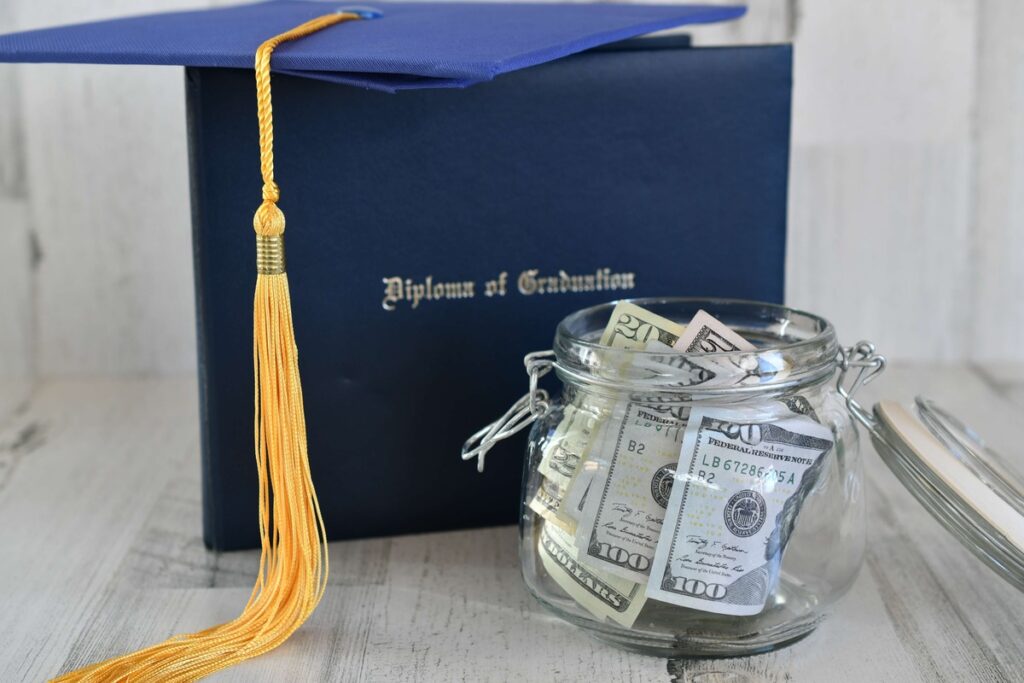I read about Iowa’s new private school law in a recently published article in the Des Moines Register. When the bill is fully phased in, it will allow any Iowa family to apply for a state-funded education account to pay for private K-12 schools.
The new law provides $7,598 each year to students to be used for tuition, fees, and other educational expenses. The amount matches what the state provides to its public-school districts for each student. Supporters of the bill maintain that this is a game-changer for families who can’t afford private school. Critics say that private school tuition is much higher so this will only help people who already send their children to private school.
The reporters interviewed the executive director of the Iowa Catholic Conference who said that K-8 tuition at Catholic private schools in Iowa ranges from $2,800 to $4,000 annually. Catholic high school tuition is higher. Annual tuition at Des Moines’ Dowling Catholic High School is $9,132 for parishioners and $12,776 for others.
Before this new law, Iowa enacted a School Tuition Tax Credit program that provided 12,600 students an average grant of $1,475 per student in 2021. Funding for this program was dependent on Iowa taxpayers electing on a voluntary basis to participate. The new program will accelerate participation by a factor of three or more (my estimate – 3 times 13,000 = 39,000). Iowa’s Legislative Services Agency predicts that 41,687 students will receive education savings accounts which means approximately 8,000 more students will attend Iowa private schools (currently enrollment is 33,692). That’s an approximate increase in enrollment of 25 percent. It’s also a decrease in funding to Iowa’s public schools of $51 million just for the new private school students (more about that later).
One of the arguments proffered by Democrats in Iowa’s legislature (who opposed the bill) was that the new law has no restrictions to protect parents against tuition hikes by private schools. I agree with that observation and note that Congress should have had the same concern with Title IV funding when the elite non-profit universities increased their tuition at higher than inflation rates in the early 1980’s and the non-elite colleges and universities followed. The appropriate response would have been to not increase loan limits and not add additional programs like Parent Plus and Graduate Plus. At least the non-elite colleges would have held their tuitions down and fewer students and their families would have borrowed money. I suspect the same will happen if reimbursement per student does not increase.
The phased-in requirements of the law will influence how many students utilize it. Initially, it is available for new kindergarten students, students who didn’t attend a private school the year before, and to students from low-income families. The state estimates that 14,000 students will utilize the program in its first year. By year four, it is available to all Iowa families.
It’s important to note that 42 of Iowa’s 99 counties do not have a private school. According to an article in The Gazette, a similar law enacted in the state of Florida in 1999 increased the number of its private schools by 53 percent with an overall increase in private school student enrollment of 19.3 percent.
If I were on the board of an existing private school, I would take the time to carefully evaluate the potential impact of the new bill. According to the private school review, the average overall private school tuition for all 51 schools in Iowa is $5,437. Tuition ranges from a low of $1,560 at Marquette Catholic Schools to a high of $32,900 at Scattergood Friends School. For private high schools (14), the average overall tuition is $9,208. There are 34 private pre-schools and 46 private elementary schools in the state.
For leaders of schools with tuition and fees below the $7,598 ESA amount, you would have to seriously consider whether a tuition increase beyond the normal inflationary rate is reasonable. If it were up to me, I wouldn’t do that unless the school was providing expanded services to its students. The good news is that eventually, the parents of your current students will be reimbursed for your tuition. You may want to investigate whether a current parent annual giving program could be enhanced and/or expanded at the same time parents who have been paying tuition with no reimbursement will receive reimbursement. Two of the focus items for the expanded fundraising could include financial aid for those who can’t afford private school and teacher salaries.
Existing schools with excess capacity in existing grades and sections should examine how easy it will be to fill those empty seats with students once their families are eligible for the program. Adding incremental students provides a healthy contribution to operating margins when no expansion of staff or facilities is necessary.
Leaders should also consider an expansion of the number of sections in each grade given that kindergarten students are eligible in year one. Adding a kindergarten section in year one may not require more than adding a teacher and teacher assistant if a classroom is available. It’s adding that section to each grade as the new kindergarteners move up that could create issues if additional classrooms are not available. Nonetheless, if the average number of students in each section is 15, the incremental revenue per section will be $113,970. That should be more than enough to cover all direct costs.
Christian schools that are already operating in the Sunday School classrooms of large churches may see the biggest upside from the new program. I suspect low enrollment Christian schools may have been the beneficiary of Florida’s program given that overall enrollments did not grow as much as the number of private schools.
Leaders of schools with tuition and fees above the $7,598 ESA amount should consider the options for expansion of annual giving fundraising to raise funds to cover the gap between the reimbursement and tuition. Families that must reach into their pockets to cover the difference between the state’s funding and higher tuition will likely be unable to cover that difference. Again, I don’t think increasing tuition because of the “windfall” reimbursement is in any school’s best interest. I suppose there may be opportunities to add educational fees like lab fees if the school decides to upgrade its lab spaces and/or equipment. The bill makes it clear that items like transportation, food, and clothing will not be reimbursed through an ESA.
Some of the other critics of the bill note that most of the funding for the new program will come from reducing payments to public school districts where its students have transferred to private schools since the state reimburses each district a flat rate based on the number of students enrolled in public schools. There is a supplement of $1200 per student that a district will receive for students who leave for a private school. That’s a relatively small amount to offset with a net loss of $6,398 for each student who leaves for a private school.
As conservative politicians grow more disenchanted with public schools, it will be interesting to see if programs like Iowa’s gain more traction. For states with declining populations, decreasing enrollments in public schools with enrollment-based funding is bad enough before competing with a state funding program for private schools. Perhaps competition is good, but unless the higher priced private schools provide scholarships for the gap between their state contribution and their tuition, the negative impact will weigh most on the poorest children.











